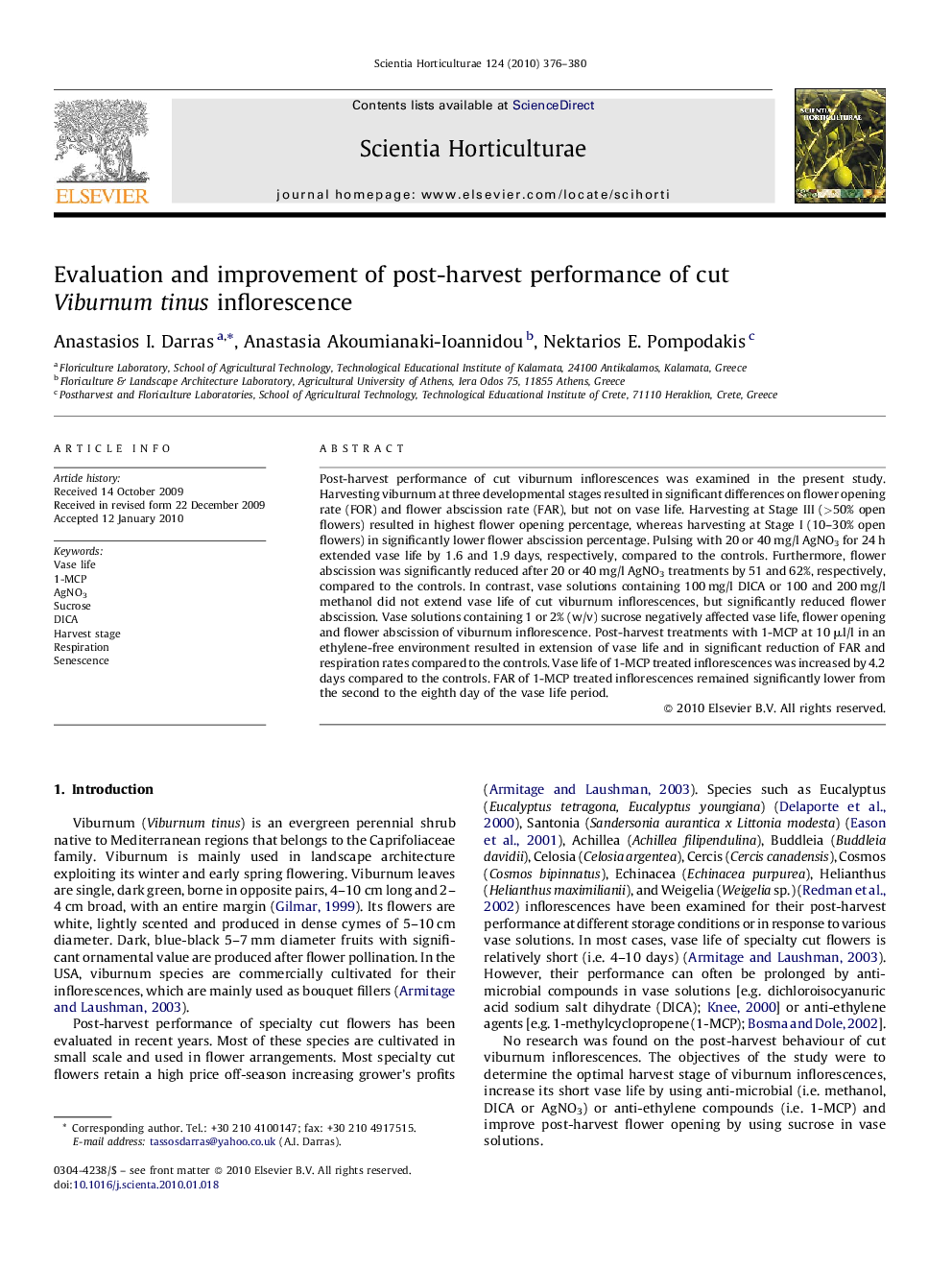| Article ID | Journal | Published Year | Pages | File Type |
|---|---|---|---|---|
| 4568840 | Scientia Horticulturae | 2010 | 5 Pages |
Post-harvest performance of cut viburnum inflorescences was examined in the present study. Harvesting viburnum at three developmental stages resulted in significant differences on flower opening rate (FOR) and flower abscission rate (FAR), but not on vase life. Harvesting at Stage III (>50% open flowers) resulted in highest flower opening percentage, whereas harvesting at Stage I (10–30% open flowers) in significantly lower flower abscission percentage. Pulsing with 20 or 40 mg/l AgNO3 for 24 h extended vase life by 1.6 and 1.9 days, respectively, compared to the controls. Furthermore, flower abscission was significantly reduced after 20 or 40 mg/l AgNO3 treatments by 51 and 62%, respectively, compared to the controls. In contrast, vase solutions containing 100 mg/l DICA or 100 and 200 mg/l methanol did not extend vase life of cut viburnum inflorescences, but significantly reduced flower abscission. Vase solutions containing 1 or 2% (w/v) sucrose negatively affected vase life, flower opening and flower abscission of viburnum inflorescence. Post-harvest treatments with 1-MCP at 10 μl/l in an ethylene-free environment resulted in extension of vase life and in significant reduction of FAR and respiration rates compared to the controls. Vase life of 1-MCP treated inflorescences was increased by 4.2 days compared to the controls. FAR of 1-MCP treated inflorescences remained significantly lower from the second to the eighth day of the vase life period.
